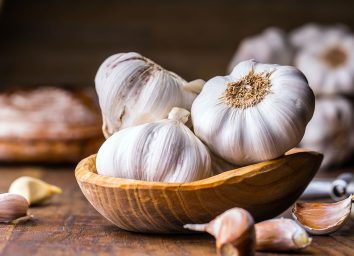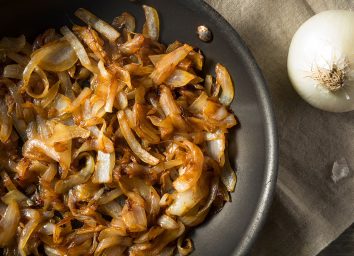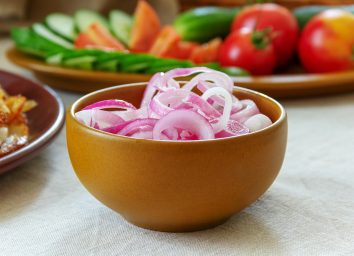Here’s How You Should Be Storing Leftover Onions
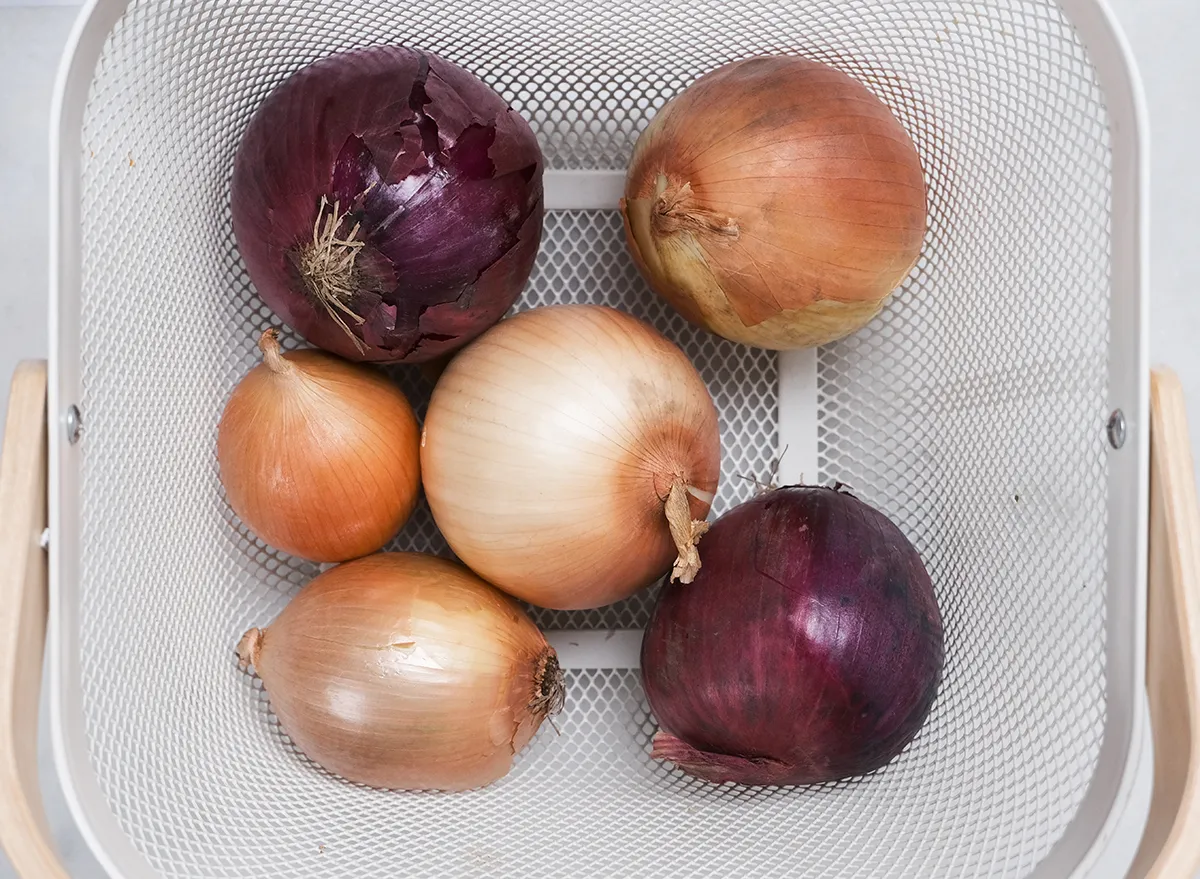
Onions: either you love them or you hate them. The root vegetable, which comes in all different shapes, colors, and sizes, may have a peculiar taste and make you cry when you cut into them, but onions are often a leading ingredient in the kitchen. Think about it: they’re key in salads, vegetable stir fry, and onion rings, to name a few. So it’s important to know how to store onions properly to avoid spoilage.
That said, we checked in with the National Onion Association and Dr. Gitanjali Kundu, assistant professor of biology at Brookdale Community College in Lincroft, New Jersey, for the best onion storing practices—especially because the ingredient is often purchased in bulk.
Here’s everything we learned about how to store onions—both uncut and cut—the right way.
Find a dark, cool, well-ventilated place to store uncut onions.
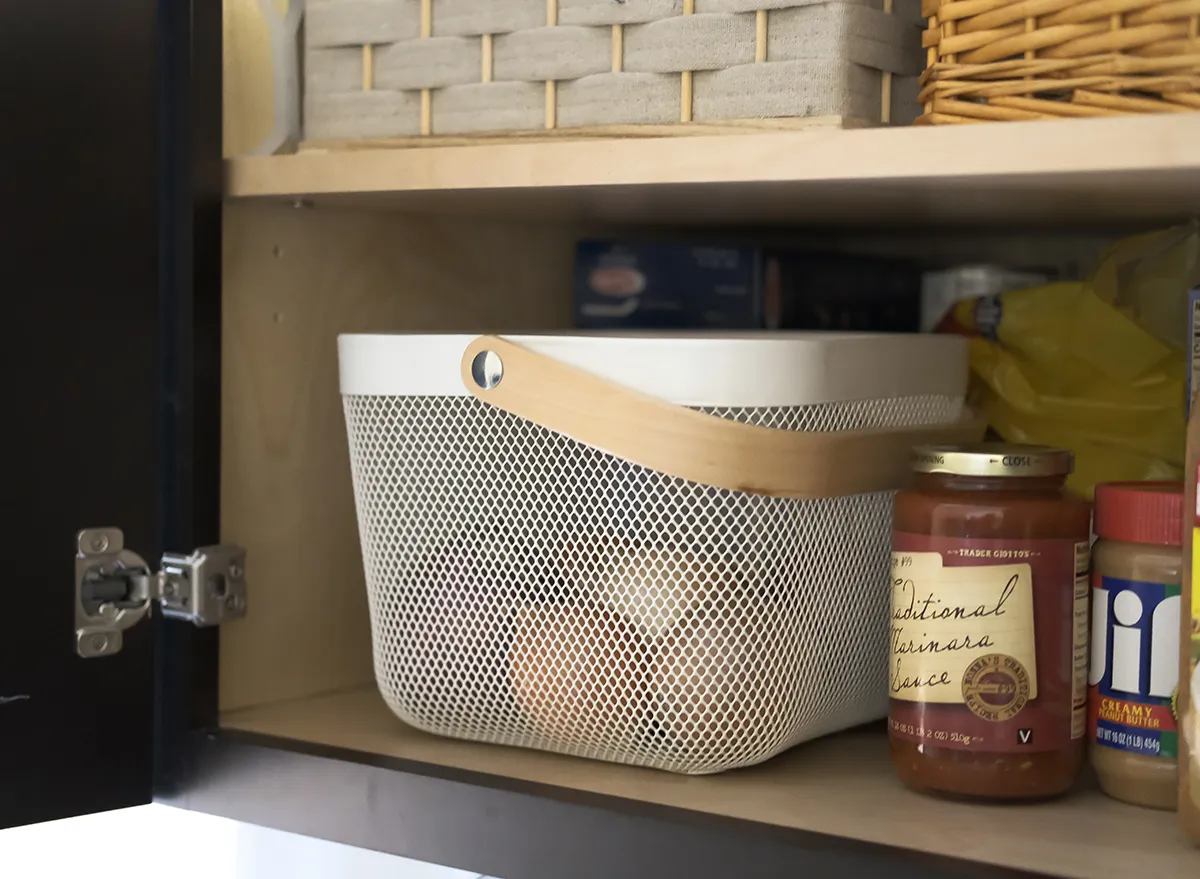
Torn on what to do with that big bag of onions when you return from the grocery store? Skip the refrigerator. René Hardwick, Director of Public and Industry Relations for the National Onion Association, suggests keeping all bulb onions in a “dark, cool place: such as a pantry, basement, or garage, which can give the onions a shelf life of up to four weeks.
Dr. Kundu also points out that a dry, well-ventilated place is very important because “the mold, which is a fungi, cannot grow in dry environments because they need moisture for growth.” The result? Slowed-down spoilage. In fact, according to one 2016 study, it’s ideal to store uncut onions at a temperature of 40-50°F.
It’s also imperative to store the uncut onions in a mesh bag or open basket rather than a plastic bag because plastic bags don’t have the proper ventilation to help the onions last longer.
But what happens if you store the uncut onions in the refrigerator rather than in a dry, ventilated area? Because the refrigerator has little ventilation, the cold, humid conditions “triggers the growth of mold, so they will get spoiled faster,” Dr. Kundu notes.
Have you ever noticed your refrigerated onions becoming sappy, soggy, and soft sooner than you’d like? That’s because the plants store carbohydrates as complex sugar called starch, and when they’re stored in a cool temperature, those complex starches get converted into simple sugar molecules. Dr. Kundu says: “Microorganisms, [such as mold], love sugar because sugar gives them the energy to grow.”
Once you cut an onion, it’s crucial to store any leftovers in the refrigerator.
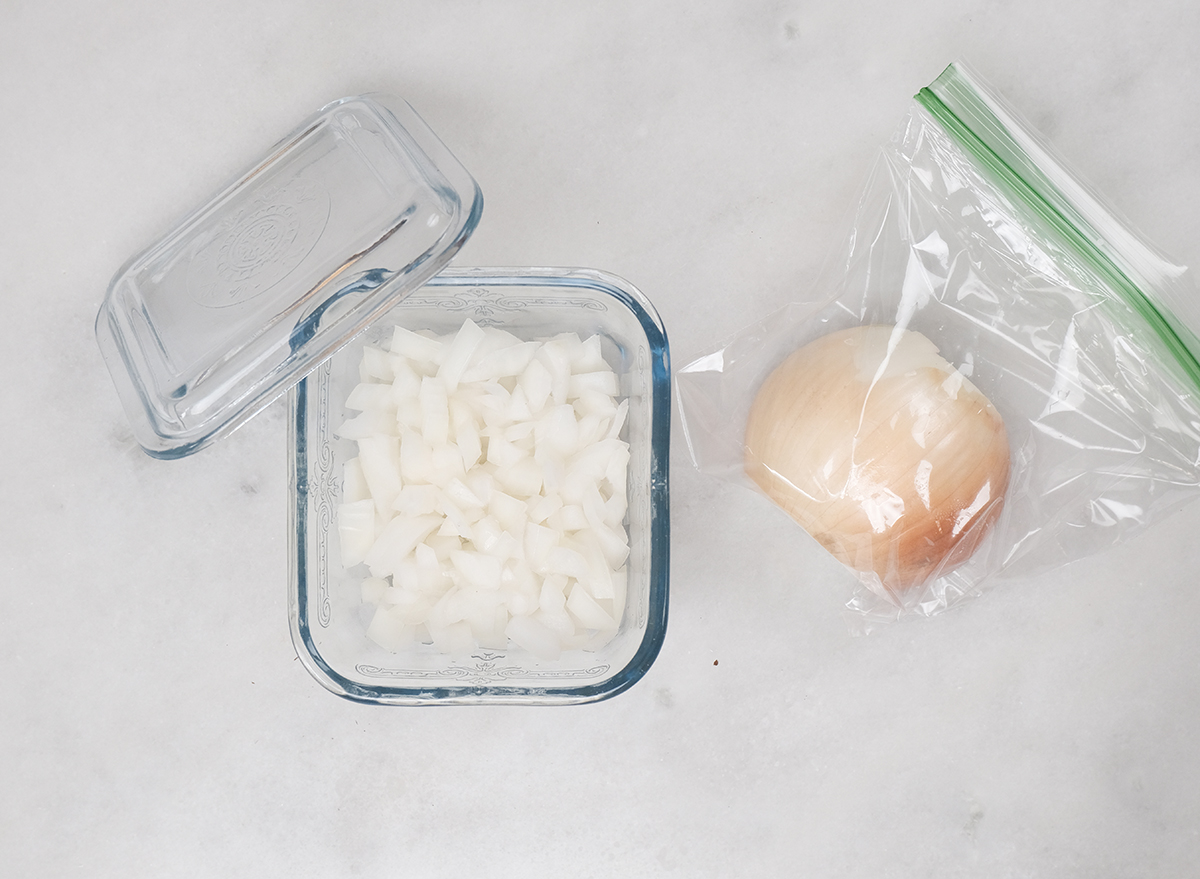
When buying onions in bulk, it’s oftentimes difficult to use them all at once. While there are ways to get creative with leftover onions (caramelize them or toss them with peppers and onions, for example), we often get in the habit of storing half an onion or diced/sliced onions for later use. But what’s the best storage practice to avoid spoilage of cut onions? Store them in the refrigerator.
According to the USDA, whole peeled onions have a shelf life of 10-14 days refrigerated, while diced and sliced onions typically last 7-10 days refrigerated. It’s recommended to store cut onions in a sealed container or plastic bag while in the refrigerator.
So why do we choose the refrigerator over a cool, dry place? Remember those rumors that you should never eat an onion out of the refrigerator because of bacteria? Not true. According to a 2017 McGill article, “bacteria are not spontaneously generated. They have to be somehow present to start with. Cutting boards and dirty hands are a possible source, but food spoilage bacteria do not become airborne; you need contact.” Basically, this means that your onions are safe to be stored and eaten at a later date, as long as you didn’t cut them on a cutting board that could be contaminated and you made sure your hands were clean while you were handling them.
Dr. Kundu explains, “It’s like when you have a cut, you can introduce germs, and that compromised area can become infected more quickly….that has happened to the onion now.”
Even though there are microorganisms inside the refrigerator, most of them can’t multiply that quickly due to low metabolism at a temperature of 4°C . This leads to slowed down onion spoilage, she adds. “But if you had kept the uncut onion in room temperature, it is a good place for fungi to grow.”
Cooked onions should be stored in the refrigerator as well.
“Sometimes cooked onions not stored properly can allow the growth of toxin-producing bacteria like enterohemorrhagic Escherichia coli, Clostridium botulinum, etc.,” Dr. Kundu says.
So, why in cooked onion, but not in raw?
“Because in raw onion, the active ingredients are there. So when you cook the onions, many antimicrobial compounds (including sulfuric acid) are diminished. Therefore you find more of a bacterial growth taking over.”
“Several toxin-producing bacteria can take resistant forms called endospores. Getting rid of the endospores is a challenge to the food industry because these structures are very resistant to heat and cooking,” Dr. Kundu adds. “So what it means is you have cooked the food thinking you’ve killed the bacteria, but endospores can still be present. They behave like a dead bacteria, and upon entering the human body become alive again and may further cause pathogenesis.”
That said, store cooked onions for up to five days in a sealed container in the refrigerator.
Here’s how to know if your onions have spoiled.
If you practice good onion-storing habits, you’ll have a better grip on knowing when your onions have spoiled. But there are a few things to look out for to help you decide whether or not you should toss the vegetable.
“Change in the color is the biggest evidence of how you can tell an onion has gone bad,” Dr. Kundu says. “[Look out for] gray spots, brown spots, black spots, and those velvet-like, fuzzy, cottony growths.”
It helps that you are able to see the spoilage of the onions. “Molds are better at growing on onions rather than bacteria, because the molds like to grow in acidic pH. We call fungi acidophiles, which means acid-loving microorganisms.”
“Sometimes, [the] presence of slime is also a sign depicting microorganisms have fed on the cells and sugar of the onion,” she adds.
Our best advice? If you notice any mold on your onion, just send it right to the garbage.
There could be health risks associated with eating contaminated onions.
Back in 2012, there was an instance where contaminated onions were recalled. “There have been cases where people thought there was contamination of Listeria monocytogenes that could grow in refrigerator temperature,” Dr. Kundu notes. “Listeria monocytogenes causes a fatal disease called listeriosis, which affects the immunocompromised population, which is people who have weak immune systems, such as pregnant women, infants, elderly people, people who have AIDS, or people who have undergone chemotherapy. It can be fatal to them.”
According to Up to Date, Cladosporium, Alternaria, Epicoccum, Fusarium, Penicillium, and Aspergillus are common genera of fungi that can be found indoors. “Fungi exposure can indeed cause adverse health effects, including infections, hypersensitivity disorders, and toxic/irritant effects from their by-products,” the article reads. According to one study, toxins can also be associated with allergic incidents.
“Ingested in higher amounts, these fungi could be involved in toxin associated illnesses,” Dr. Kundu additionally notes. “Some dangerous toxins produced by several species of fungi are mycotoxins, aflatoxin, fumonisin, ochratoxin, etc.”
It’s also important to note that last year, NOA confirmed onions cannot help cure the flu (yes, people really believed this!) and are not responsible for food poisoning. Phew!
